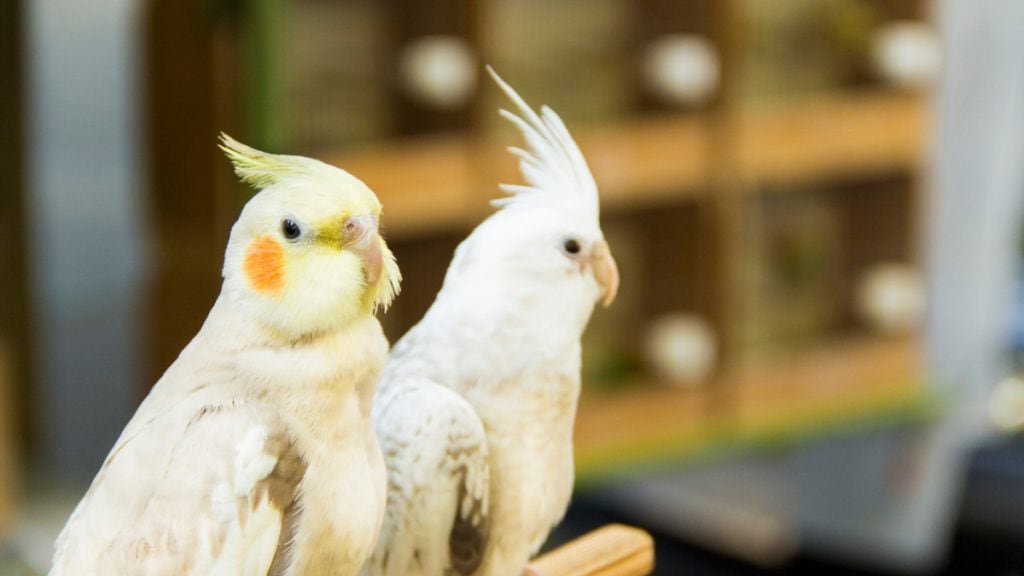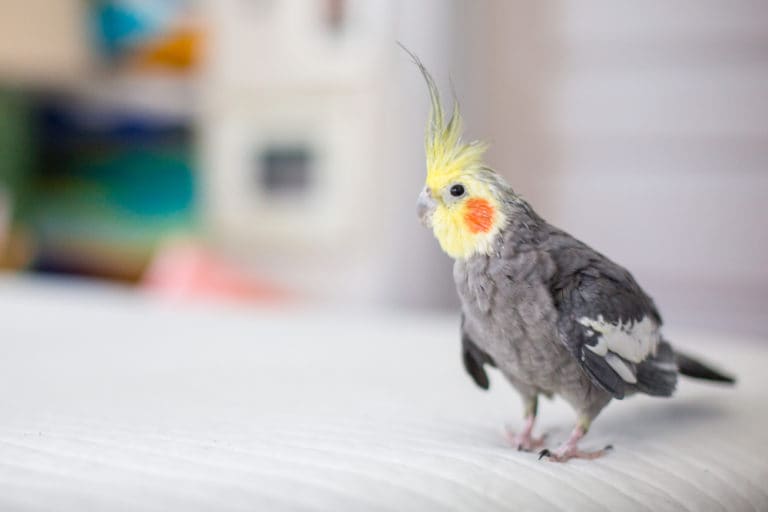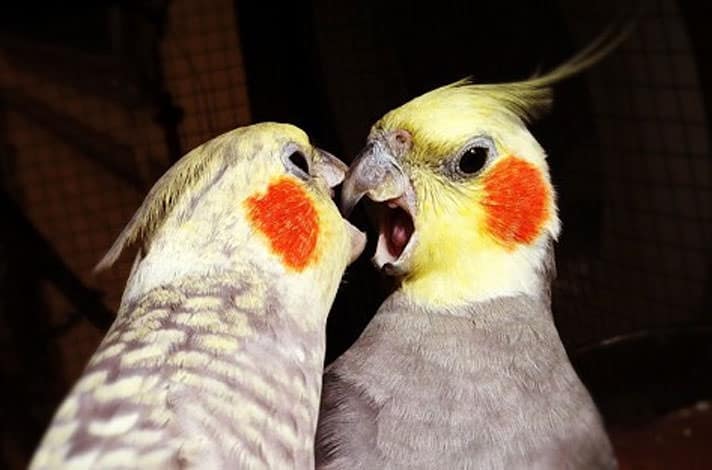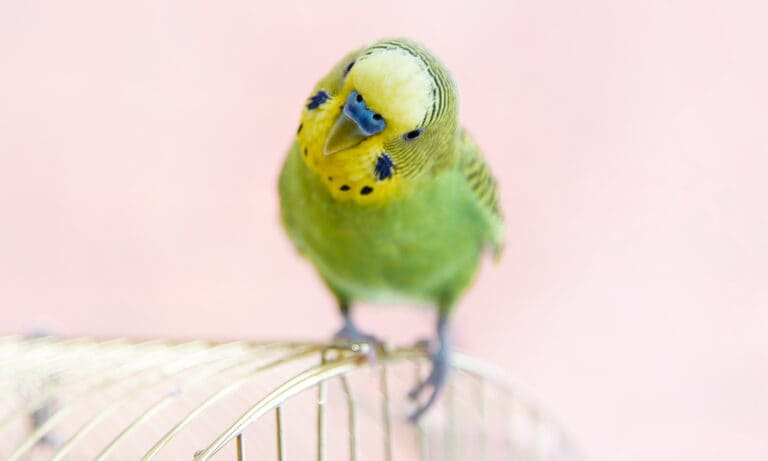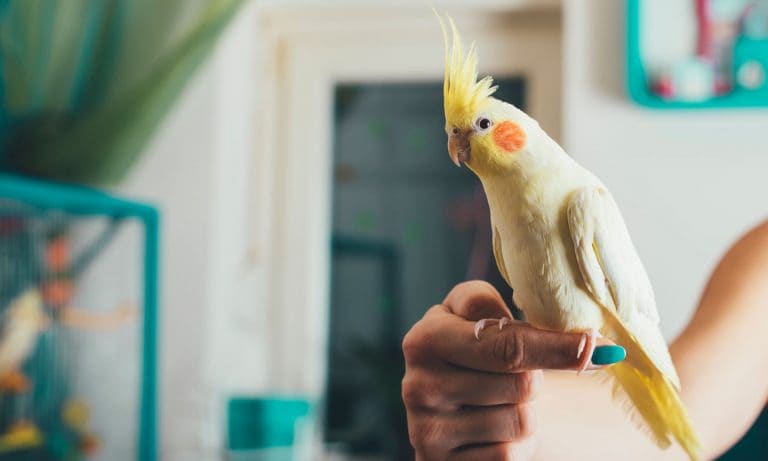Your hen cockatiel may lay eggs, even without the male cockatiel around. We asked some experts how cockatiel owners should handle the situation.
“Leave the eggs in the nesting area for 11 days past the time the last egg of the clutch is laid,” suggests Larry Nemetz, DVM, of the B.I.R.D. Clinic in Southern California. Cockatiel clutches usually contain four to six eggs.
The process takes a toll on the female cockatiel’s health. Prepare your hen cockatiel for this taxing time by providing cuttlebone, for calcium, and a good protein source. The calcium and protein deficiencies can lead to pathologic fractures and accelerated aging.
So why does the female ‘tiel go through all this and lay eggs if she has no mate? “The stimulation to go into breeding mode is strong,” said Dr. Lisa Paul, DVM, Chief of Staff at Banfield Pet Hospital in Colorado. “Day length and the presence of fresh food can contribute to this condition.”
True, many other species also lay unfertilized eggs, but, unlike other species, the time of the year that the hen cockatiel will produce eggs is unpredictable. “From over breeding, cockatiels can lay eggs anytime of the year,” Nemetz said. He warns against certain social conditions that stimulate egg-laying. “If someone has two female cockatiels, one that becomes active can stimulate the other female ‘tiel and the cross stimulation can create a larger risk to medical reproductive problems,” he said. “If someone has a female-male cockatiel combination, they must be aware of the possibility of fertile eggs and possible aggression of the male to the female during a breeding cycle.”
Apart from palpating the cockatiel – feeling the abdomen for the presence of an egg “to see if it is enlarged and swollen, and perhaps has a firm, large round structure present,” Nemetz said – you probably won’t notice visible signs that your cockatiel is “with egg.” Leave that up to your veterinarian. You might look instead for behavioral changes such as brooding activity.
“Some cockatiels will shred paper, others will seek out dark locations,” Paul said. “Without a nest box, many ‘tiels will use the cage floor if they are determined to breed. Breeding females will lay eggs and start to sit on them once the clutch is completed, usually around six eggs.”
Excessive egg-laying can have lethal consequences. The effort expended can lead to prolapsed, a protrusion of the reproductive tract from the cockatiel’s vent. Veterinarians recommend regular checkups, and when the female cockatiel exhibits brooding behavior, a closer look.
“If the cockatiel is fluffed and at the bottom of the cage, if the cockatiel lays more than one clutch per season or more than three per year, bring in your cockatiel,” Paul said.
Eggs that hen cockatiels cannot expel also pose a great threat. This condition is known as egg-binding, and requires rapid veterinary care. Keep an eye out for unusual behavior or signs of distress.
“Obviously any sign of labored breathing, difficulty in defecating, lethargy, or changes in activity should be investigated immediately,” Nemetz said. He added that “most of our clients come in once a year to reevaluate their cockatiel’s condition.” Apart from limiting breeding conditions, a healthy dose of prevention might be the best medicine; take your cockatiel in for regular vet checks.
Excerpt from the Popular Birds Series magabook Cockatiels with permission from its publisher, Lumina Media.
Featured Image: iStock.com/VEX Collective
Share:
